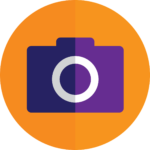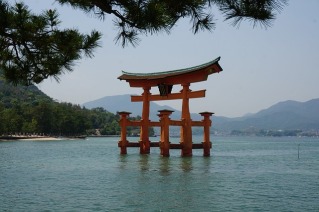Business Etiquette & Culture in Japan

Top Tips for Doing Business in Japan
Japan is often seen as a land of paradoxes where ancient tradition rubs shoulders with up-to-the-minute technology and internationally-acclaimed business practices; where you can see “salarymen” enjoying traditional o-bon festival dances while kimono-clad teenagers talk on smoothly futuristic mobile phones. Japan is one of the most technologically advanced and vibrant business cultures in the world and the third largest economy, giving plenty of reasons why doing business with Japan is worth doing right.
TJC Global understands that being fluent in a language also means being fluent in the subtleties and intricacies of the culture and business etiquette associated with it. To ensure that no embarrassing misunderstandings occur in a professional context, all our translators and interpreters are experts in the business culture and etiquette associated with the languages they work with. Read on to find out our top tips for doing business in Japan.
About Japan
Often called the Land of the Rising Sun because the Kanji that make up its name in Japanese (日本 pronounced Nihon or Nippon) mean ‘sun origin’, Japan is an island nation situated off the Eastern coast of the Asian mainland, and spanning from the Sea of Okhotsk to the East China Sea. With 127 million calling Japan home, it is the tenth most populous nation in the world. In terms of GDP, Japan is the third largest national economy in the world after the USA and China.
The Japanese archipelago is divided into eight major regions known as Kanto, Kansai, Hokkaido, Chūbu, Tohoku, Chūgoku, Shikoku and Kyushu (incl. Okinawa). These areas are subdivided into a total of 47 prefectures (都é“府県 Todofuken). 43 of these are prefectures (県 ken) proper; two, Osaka and Kyoto, are urban prefectures (府 fu); Hokkaido is a “territory” (é“ do) and Tokyo is a “metropolis” (钽 to). TJC Global’s network of professional interpreters spans all eight of these major regions of Japan.
Tokyo is the capital of Japan, seat of the Japanese government and home to the Emperor of Japan. It is the most populous metropolitan area in the world. Tokyo is located on the southeastern coast of the Japanese island of Honshu. The larger area, known as the Tokyo Metropolis is made up of 23 separate wards, and encompasses 26 cities. The Tokyo metropolitan area has a population of around 35 million.
With almost 19 million people living in the metropolitan area, Osaka is the second largest city in Japan by daytime population. It is located at the mouth of the Yodo river at Osaka Bay on the Southern coast of the main island of Honshu. Osaka was historically a city of commerce, and played a key role during the Edo Period in the Japanese rice trade. Nowadays, Osaka’s main industries are commerce, the service sector and manufacturing.
The Japanese Language
The Japanese language is very different to European languages or even most other Asian Languages. It has a verb-final construction which means the verb comes at the end of the sentence. This is unlike English which is mostly verb-second. This makes things complicated for simultaneous interpreters of Japanese, as they have to wait until the end of the sentence in Japanese before they can start speaking in English and vice versa.
Japanese has no definite or indefinite articles such as the English “a”, “an” and “the”. Speakers must be very careful to ensure the listener knows whether they are talking about “the document” or “a document”, for instance. There are also no plural forms in Japanese – for example, “shiryou” could mean either “document” or “documents”.
Because of these things, a lot of Japanese communication relies on context. The same word can also have any number of meanings depending on the context it is used in. For example, hai, can mean “Yes”, “thank you”, “I understand”, “I agree” and many more things according to the situation in which it is employed.
The Japanese alphabet is made up of characters which represent syllables rather than letters which represent individual phonemes like in English. Japanese employs three alphabet scripts: Hiragana, Katakana and Kanji. Kanji are Chinese characters that have been adopted by the Japanese and which have multiple variant pronunciations and meanings. There are approximately 2,000 to 3,000 characters commonly used in Japanese. Contrary to popular belief, Kanji are not just pictures, or even stylised pictorial representations of what they mean, but a complex system of radicals that must be mastered and learnt off by heart.
Japanese is so unique that you need an interpreter or translator with experience and able to deal with a wide range of specialist terminology, not to mention the general complexities of the language.
Click for more information about our Japan Language Services.
Useful Japanese Phrases
| English | Japanese |
| Hello | Konnichiwa |
| Hello (on telephone) | Moshi moshi |
| Goodbye | Sayonara |
| Good morning | Ohayo |
| Good evening | Konbanwa |
| Good night | Oyasumi |
| How are you? | O genki desu ka |
| Fine, thank you. And you? | Hai, genki desu. anata wa? |
| Pleased to meet you | Hajimemashite |
| Cheers! | Kanpai |
| Bon appetit! | Itadakimasu |
| Please | Kudasai |
| Thank you | Arigato gozaimasu |
| Excuse me | Sumimasen |
| Sorry | Gomen nasai |
| How much is this? | Ikura desu ka? |
Japanese Business Etiquette
The Japanese business practice of today has been westernised to a large extent but still retains some traditionally Japanese practices which are often misunderstood or mistaken by their non-Japanese business partners.When conducting trade relations with Japanese companies, one cannot underestimate the value of having in-depth knowledge of cultural etiquette. Our interpreters will act as mediators for you, ensuring that everyone is satisfied. It is important to remember that modesty and humility are highly valued in Japanese culture, so try to avoid behaviour that suggests arrogance or over-confidence.
Greetings
Bowing is an important part of Japanese culture. The bow is used both as a greeting and as a show of respect. The depth and length of the bow both reflect your attitude to the person you’re bowing to. The lower the bow, the more respect is shown. A good rule of thumb is to bow to the same degree as the person you’re meeting, with your eyes down and hands by your sides. Eye contact should not be maintained during bowing as this is considered bad manners. Greet the highest-status individual first, followed by the oldest when meeting a group of Japanese. Non-Japanese should feel free to just acknowledge a bow and hold out a hand to be shaken, rather than attempting to bow themselves if they prefer. But choose one method and stick with it.
Names & Titles
When provided with someone’s full name, it is important to remember that Japanese family names come before the given name – a reversal of the English custom. You should address people by their family name until you have been invited to use their given name. It is usual in Japan to call someone by their family name followed by the honorific “san”.
Business Cards / Meishi (å刺 pronounced mei-she) are the Japanese equivalent of business cards. They have a special meaning and to receive a business card without due care and attention can be seen as a personal rudeness. The correct way to present meishi is held at the top corners with the lettering facing the person receiving the card. The receiver should take the card by both lower corners (careful not cover the name with their fingers), read it carefully and place it somewhere safe. If in a business meeting, set it face up on the table in front of you. Do not put it in your wallet or back pocket. When exchanging meishi the individual of lower status will pass their card first, and the individual of higher status will pass their card second. Meishi are usually given after bowing. You may consider investing in a nice business card holder, as the condition of your business card is considered to be a reflection on how you conduct business.
Keigo (敬語 pronounced kay-go) is a polite style of Japanese used frequently in business when talking to superiors. Keigo (literally “respectful speech”) is used to show respect or humility in the face of people you are unfamiliar with. It is often not taught in schools or at home so many businessmen receive lessons when they enter a company.
Uchi/soto means roughly inner/outer and refers to one’s relationship within a particular group. In Japan, status is conferred not only vertically, i.e. superior and subordinate, but also horizontally, i.e. those with whom you are familiar and those with whom you are not. The group dynamic is a very important one and when you first meet anyone you will immediately take up the position of outsider, soto, even if you are from different branches of the same company or work in the same field. You should understand the distance that you are shown as a sign of respect, and not think that your hosts are being cold to you. The position of soto does have some advantages over that of insider, uchi, for instance you are given more leeway in your behaviour and are not expected to follow the same strict rules as someone who is uchi.
In Japan silence is very important. Though you may feel uncomfortable, try to analyse what sort of a silence it is, whether it is a respectful silence or an upset silence. There is a definite connection between silence and wisdom. The Japanese character for Knowledge 知 combines the characters for losing 失 and mouth å£, which goes to show that the Japanese consider people wise who refrain from speaking. As the old proverb goes, “better to remain silent and be thought a fool, than to open your mouth and remove any doubt”. Some Japanese business books have also remarked on how westerners, especially Americans, feel uncomfortable with silence, so your associates may be trying to intimidate you.
Gifts in Japan are given to show appreciation of a favour done for you or to establish a sound business or personal relationship. Gifts should be something from your country and of a reasonably high quality, preferably with a special significance to your company or local area and not made in Asia. Gifts should be wrapped in “business colours” like dark greens, greys, blues and browns, but avoid white as it symbolises death. Gifts should be given and received with both hands, as with meishi. Remember that to your business partners the gift you give and the way that you give it reveal a lot about your character and your attitude towards business. Avoid giving gifts in groups of four or nine as they are considered unlucky.
Appearance
When doing business in Japan, dress conservatively and avoid anything that might suggest a lack of seriousness or respect. Men should wear a dark suit, a white shirt and tie, and women should dress conservatively and in subdued colours. Bring shoes which can be put on and removed very easily, as you will be required to do so in public homes and in many restaurants.
Dining Etiquette
Using chopsticks is an essential part of dining culture in Japan so it is important to observe the rules of etiquette associated with it.
- Do not pass food with your chopsticks as this is reminiscent of a ritual that takes place at Japanese funerals.
- Do not balance your chopsticks across the top of your bowl. Use a chopstick holder.
- Do not point your chopsticks at anyone or anything or wave them around over food .
- Do not suck sauces off of your chopsticks.
- Do not rub chopsticks together or play with them.
- Do not stick chopsticks upright into rice.
- Do not stab food with your chopsticks.
An oft-cited myth about dining in Japan dictates that some food should be left on the plate in order to indicate one is full, and does not require a second helping. This is now considered old-fashioned; instead it is considered polite to clear your plate completely in order to express appreciation of the meal, and to avoid waste.
Beliefs & Superstitions
There are many intriguing Japanese superstitions that may be unknown to foreigners. Some of the most common include:
- As mentioned above, the numbers 4 and 9 are considered unlucky in Japan because the words for them are pronounced the same as the words for death (shi) and suffering (ku) respectively. You may find that these numbers are avoided as room numbers and floor numbers in buildings in Japan for this reason.
- The talismans sold at shrines around the country are known as Omamori. It is believed they bring luck to the owner. The type of luck (in love, money or career) depends upon the type of omamori.
- It is considered bad luck to whistle at night as it will bring a snake or a ghost to the home of the whistler.
- Seeing a spider in the morning is considered lucky, while seeing one at night is considered bad luck.
Locations we cover in Japan
What forms of interpreter services can TJC Global provide?

Video/videoconference interpreting: (Video remote interpreting is also available) TJC provides language interpreting services to support events such as business meetings, conferences, legal/court/arbitration/litigation, and other online business interactions in the industry.
Participants can communicate via video or voice calls using computers, laptops, smartphones, tablets, etc. These can be recorded should you wish to take minutes. Our professionally qualified interpreters can join your online virtual meeting, event, or proceeding, for example, and interpret remotely in the language pairing you require to facilitate smooth communication between all parties. They also provide relay interpreting.

Telephone/teleconference interpreting is a practical way to bridge any language barriers. The interpreter is either located remotely (away from either party) or is with one of the parties. In both cases, they deliver interpreting services through telephone conferencing.
Telephone interpretation is helpful for clients who cannot travel to their counterparts’ countries but still wish to hold business discussions or communicate progress updates. At TJC Global, we are pleased to provide professionally qualified interpreters in almost any selected language combination.
Simultaneous & Consecutive interpreting

Simultaneous interpreting (also available with Video Remote Interpretation (VRI))
is used for international conferences, critical business discussions, seminars & symposiums. In this case, two to three interpreters are usually situated in a booth, away from the audience, and take turns to interpret at high speed, changing over every 15-20 minutes to avoid fatigue and the lack of concentration, which affect the quality of interpretation.
The interpreters listen to the speaker’s message using headsets and repeat it immediately (practically “simultaneously”) in the target language to benefit relevant audience members. They also provide relay interpreting, which is helpful if the speakers give presentations in several languages.

Consecutive interpreting (also available with Video Remote Interpretation (VRI)) is the most common type. It is used for business discussions, negotiations, contract exchanges, commercial, legal and technical meetings, medical or court hearings, or on-site inspections or audits. The interpreter listens to the speaker, often making notes, and later delivers the meaning in the target language.
The interpreter may wait until a pause or the end, at which point they deliver a translation relatively quickly. Consecutive interpreting may also be used at conferences for panel discussions, Q&A sessions or private discussions between parties – at a stand or elsewhere.
Looking for translation or interpreting assistance?
TJC Global provides specialist interpreting and translation services in various specialist fields. Whatever your requirements, we can find the right linguist to assist you. If your industry or project type is not listed here, please contact us directly with your enquiry.
Our language specialists utilise their knowledge of subject-specific terminology to deliver precise, unambiguous translations, whatever the context – enabling you to communicate effectively with the rest of the world. We are also able to adapt to almost any type of project.
What to do next?
Please use the Quick Quote system above for a quote for interpreting, translation services or a related enquiry.
If you would like more information about our language services, please contact us.









